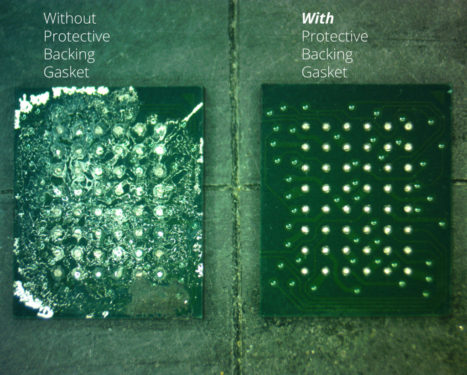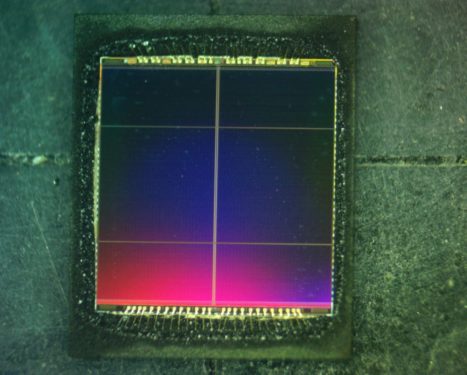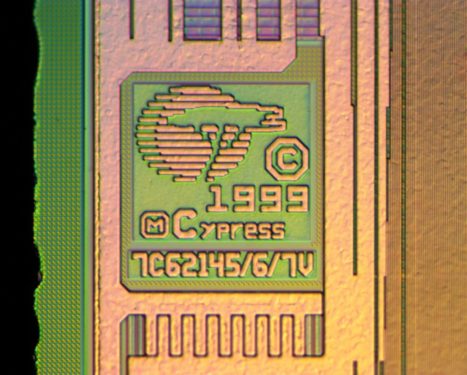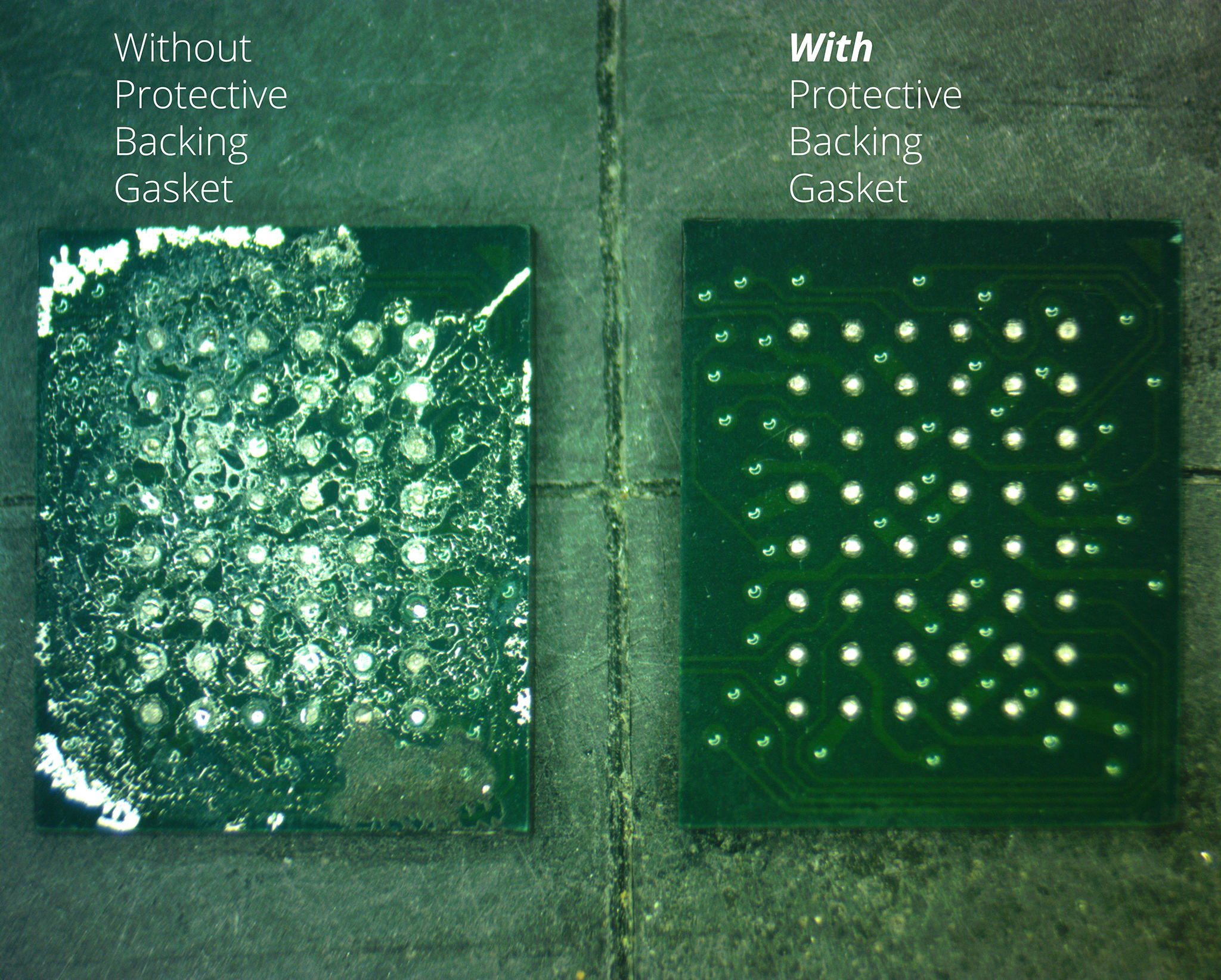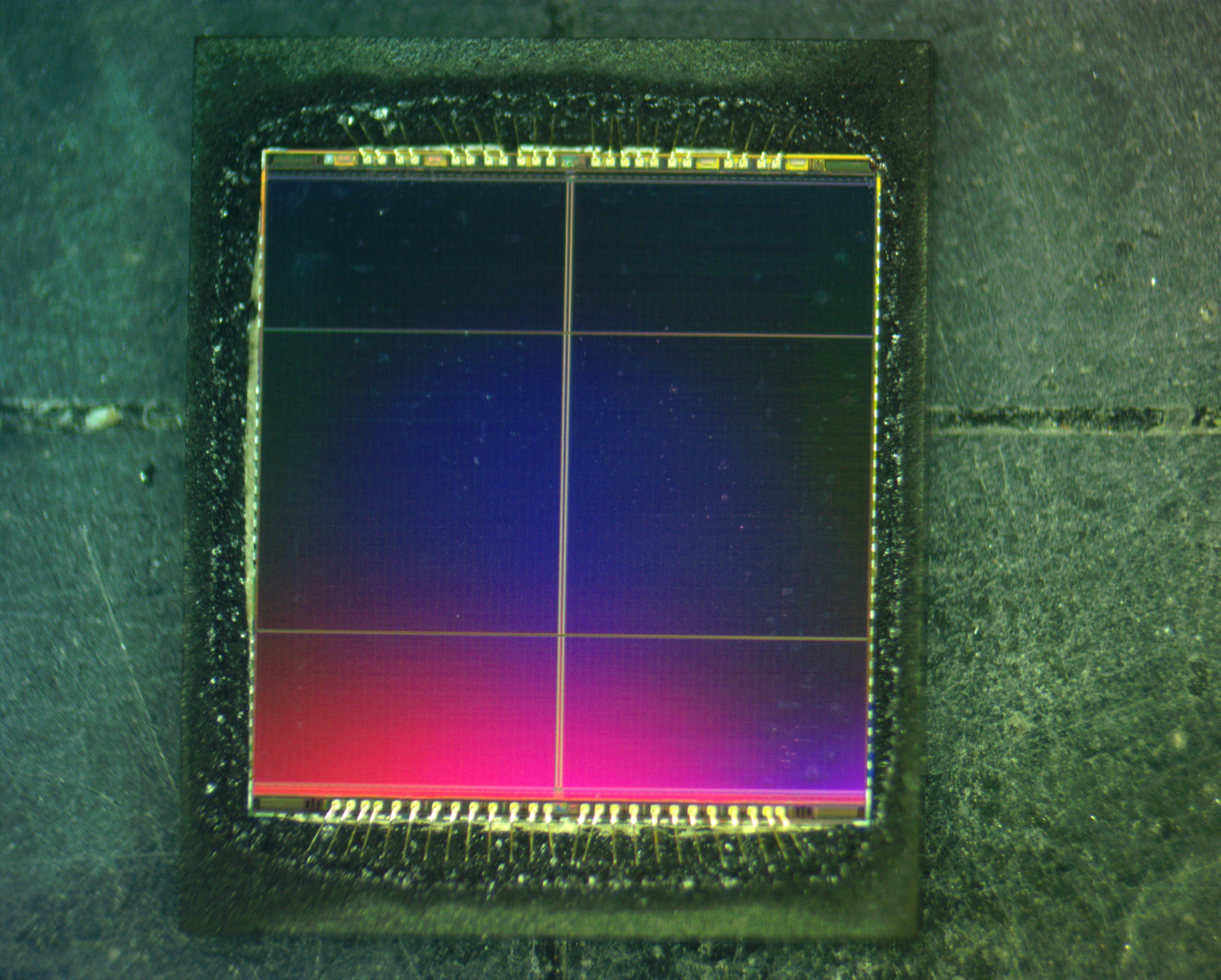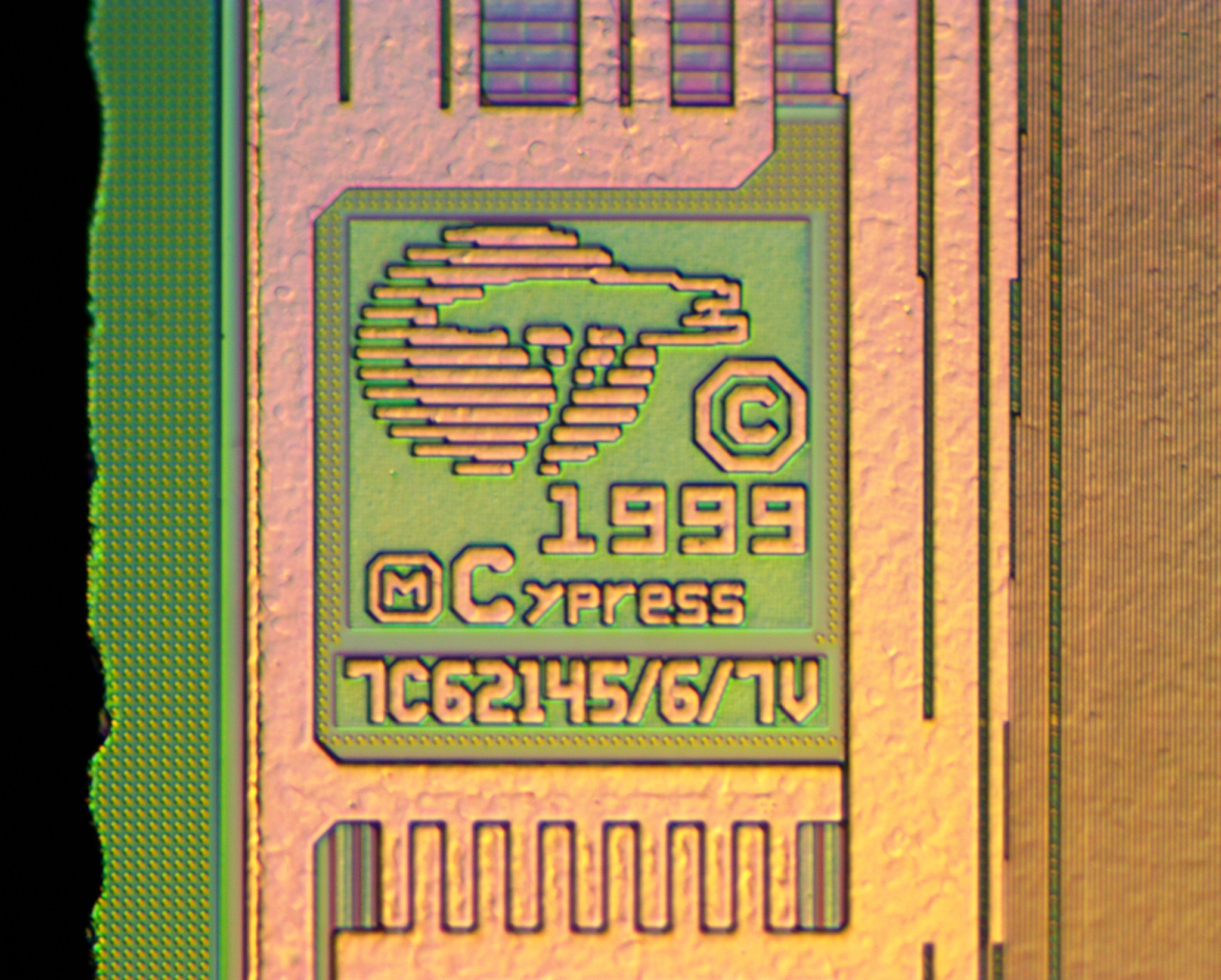BGA Decapsulation with Monolithic Gasket and Custom Backer
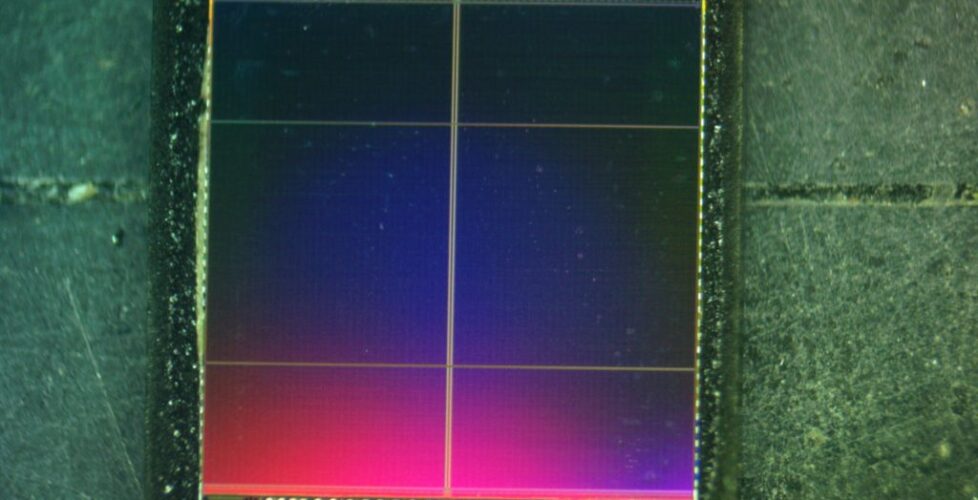
Today we decapsulated a BGA that was very stubborn to etch. After a few iterations of nitric-only and mixed-acid etches with nitric and sulfuric that didn\’t seem to penetrate the encapsulant, we decided to give it a shot with a higher temperature sulfuric acid etch.
The JetEtch Pro rose to the occasion with an absolutely beautiful etch, clearing the die of encapsulant, exposing the ball bonds, and yielding a photogenic decap.
Things may not always be as easy as they seem, however. When approaching the application, our technicians decided that a Monolithic Gasket was the best option for the etch fixture. This is not an uncommon solution in use with our equipment. The kicker here comes in the expertise of the user. When etching most samples at higher temperature, there are few — if any — considerations to make regarding anything other than opening the part and just getting in there. With many BGAs, though, one has to take into careful consideration the potential damage that could occur when etching a sample at a temperature that is higher than the melting/re-flow point of the solder balls. At 250℃, the melting of the solder balls during the decapsulation process is a very realistic outcome — one which we want to avoid, of course.
Many of the BGAs we see come though here will melt well below the temperature required to remove the mold compound, leaving the inexperienced user at an impasse. How do you etch the encapsulant at 250℃ but also not melt the solder balls?
The answer in this case: a custom Monolithic Gasket AND a custom backing gasket.
The use of the custom backing gasket allowed us to apply pressure to the package while not having anything heated come into contact with the solder balls, thereby drastically reducing the heat exposure to that part of the package. What we got was a perfectly etched part, with solder balls so clean that the sample could be plugged into a socket and tested. The results of a backed versus non-backed sample can be seen here.
